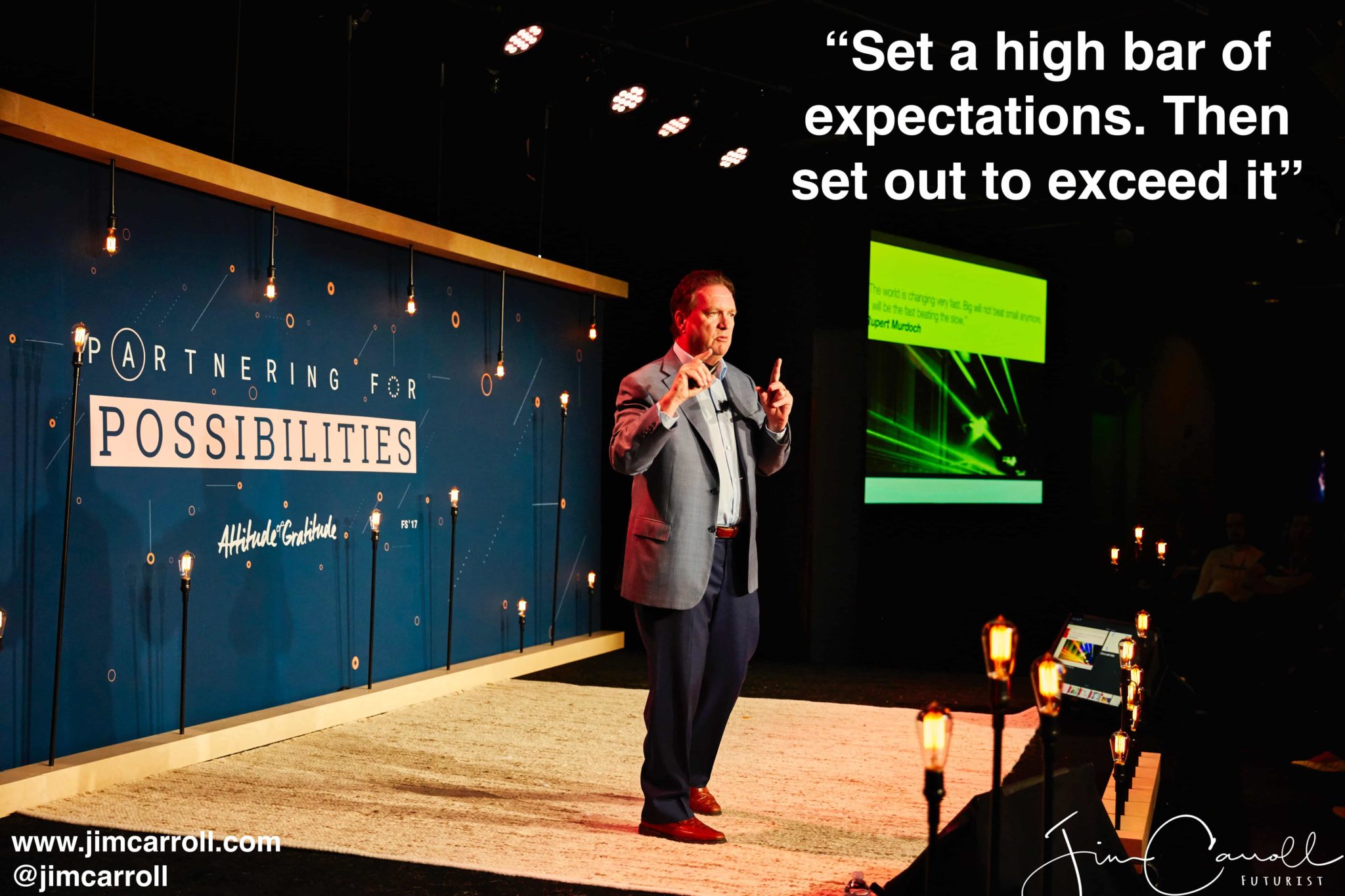Does your organization have the right stuff to deal with todays’ information-empowered, globally collaborative, we-know-better-than-you-do customer?
Maybe not.

Imagine that you are a big company.
Imagine that you roll out a new piece of software that was supposed to make things better for your customers.
Imagine that it doesn’t do that — worse yet, a feature that existed for your best customers has now disappeared. Even worse — those very same customers now have to pay a fee to do what they could previously do for free.
In other words, imagine that you’ve broken a customer-system, and you are now penalizing those customers for your mistake.
Imagine this : you’ve tried to make things better, and you’ve only made them worse.
Does this happen in the real world? Alarmingly, often. I’m going through this exact type of experience right now with a billion-dollar company that I deal with regularly.
Out of respect — since I think their CEO is a smart guy — I won’t name names. I will, however, offer up my advice on how to respect, not mistreat, your customers.
If you are implementing any type of customer oriented system or inititiave, understand these truths:
- Be open. Solicit feedback – get the customers on side.
Don’t just rollout the new system and hope for the best. Know that there will be problems, bugs, and things that will go wrong. Start out on the right foot with the customers by admitting this, and seeking their input, guidance. The new business world is all a Beta — Google gets this, and you should get this too. - Fix things fast, because things break fast. As things go wrong, fix them fast. Have a communications plan. Be prepared to reassure the customer quickly. In this new era of hyper-information feedback, don’t let the customer sit and stew for a moment — proactive information and proactive action is the only weapon you have, and you have to use it.
- Adopt customer-niceness as a core virtue during the pain period..
There are rules and fees and structure that can exist in any customer relationship. But make everyone aware on the team that there are likely some things that are going to have to be waived during the rollout. The core virtue is, “we’re going to be nice to the customer, because we know it is not the customers fault that things have gone wrong.” - Admit that mistakes will happen . It’s ok. It’s the 21st century. Bad things go wrong all the time. Accept that, and use that as a go-forward strategy. “Things will go wrong and we will work to fix them fast” is a better strategy than “we plan on rolling it out and holding our breath that things don’t get messed up.”
- Don’t hide from the customers. Customers today can turn on you in an instant. Rumors, stories, misinformation can abound. The customer has a lot of information, and might not always be reading it right — but they can certainly make it go wrong in a hurry. A clear, and open, and honest, reactive strategy with the customer is in your best interest. More communication is the best rule.
- Turn customers into fixers. The customer is a new customer. They expect operational excellence, and if they don’t get it off the bat, they are prepared to help fix it. The complexity of a new customer software system can undergo all kinds of testing internally, but some things will never show up until it goes live. That’s why you want to recruit the customer as a problem solver. Turn it from a “bad rollout of new software” into something different, by letting the customer know that you want them to help stress test the system and find the things that aren’t working quite right.
- Get everyone inside on the same page. Let everyone throughout the organization know that something new is going to be happening that could cause customer stress. Get them to understand that the new JOB #1 is Customer-Destressification.
- Have an escalation plan. As things go wrong, be prepared to pump them up the chain in a hurry. Have a team ready to analyze what the customers are saying, do triage on the big ones, and work them quickly.
- Empower people with niceness. Customer-centricity and the instant-age demands that the customer be made happy — quickly. Give staff who have not previously had the authority, the authority to do things to the customer that are nice. That will help to ease the early part of the “pain process.”
- Learn from the experience. Learn from this rollout to figure out how to do it better the next time.
In today’s hyper-competitive environment, your customer relationship can be fleeting at best. They often know more about your market than your staff does. Act accordingly, or you look like a fool — and you end up losing customer loyalty.




GET IN TOUCH
Jim's Facebook page
You'll find Jim's latest videos on Youtube
Mastodon. What's on Jim's mind? Check his feed!
LinkedIn - reach out to Jim for a professional connection!
Flickr! Get inspired! A massive archive of all of Jim's daily inspirational quotes!
Instagram - the home for Jim's motivational mind!